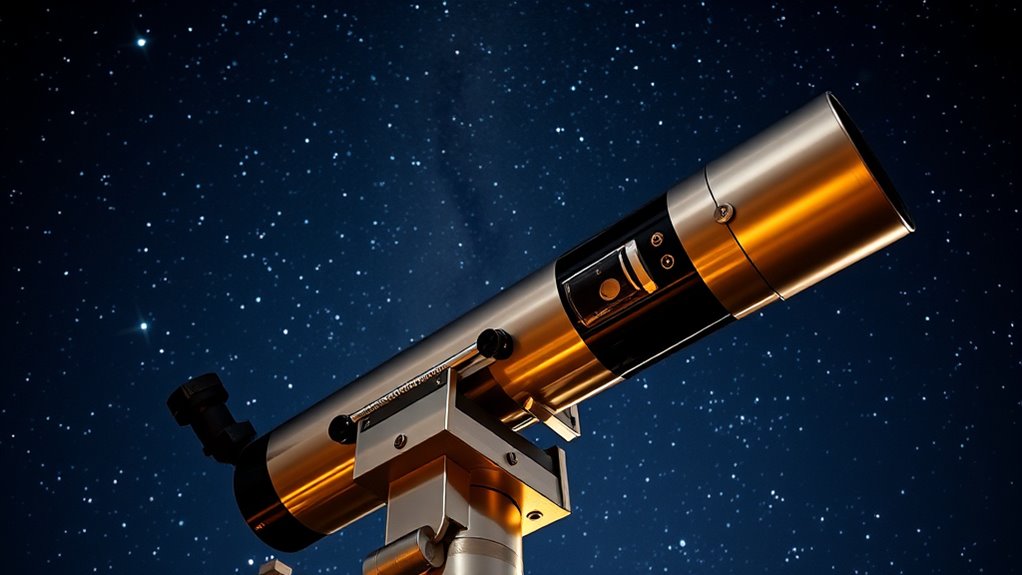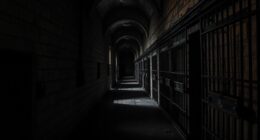If you’re looking for the best 130mm triplet APO refractors for astrophotography, I recommend models like the Explore Scientific ED102 and the SVBONY SV550 for their sharp optics and excellent build quality. Their high-quality ED glass and precise construction help produce stunning, chromatic aberration-free images. Portability and stable focusing are key features to weigh. Keep exploring, and you’ll discover more about the top options to elevate your stellar imaging experience.
Key Takeaways
- Look for premium ED glass triplet refractors with high optical quality and minimal chromatic aberration for detailed astrophotography.
- Prioritize models with sturdy, precise focusers (2.5-inch or larger, dual-speed) for accurate image focusing.
- Ensure compatibility with your mount and accessories, considering size, weight, and mounting options.
- Check for durable build quality, portability, and included accessories like rings, dovetails, and cases.
- Consider manufacturer support, warranty, and user reviews to gauge long-term reliability and customer satisfaction.
SVBONY SV550 Triplet APO Telescope (122mm F7 ED Refractor)
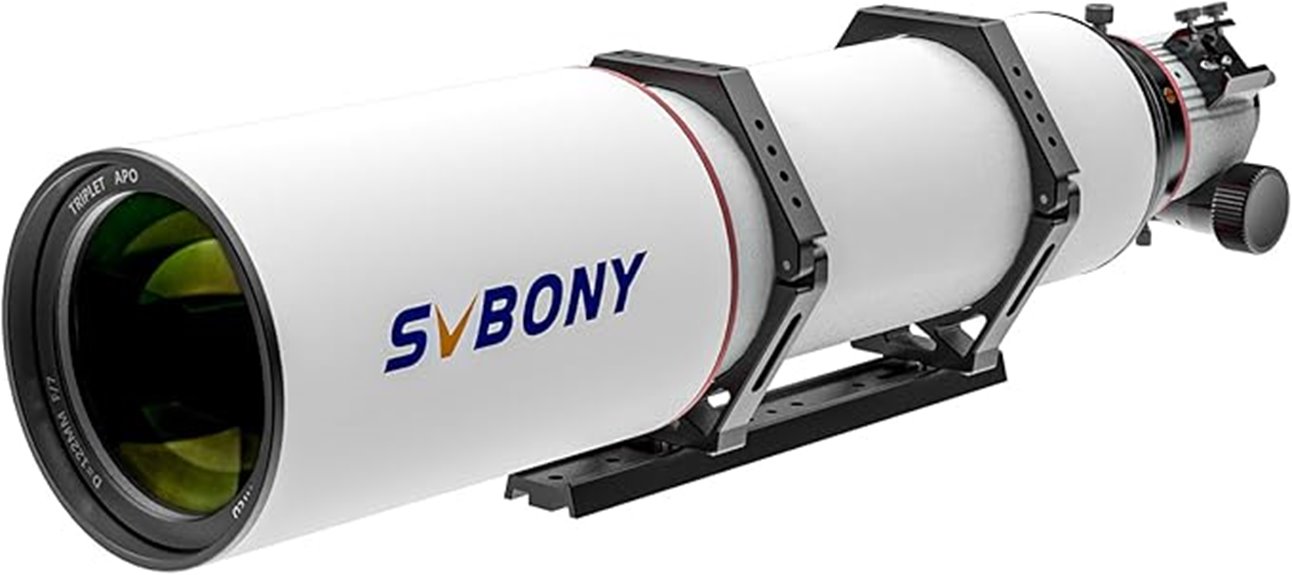
If you’re looking for a portable yet powerful refractor for astrophotography, the SVBONY SV550 Triplet APO Telescope is an excellent choice. Its 122mm aperture and F7 focal ratio deliver bright, detailed images of deep-sky objects with minimal chromatic aberration thanks to the high-quality FPL-51 triplet lens. Weighing just over 14 pounds, it’s easy to carry and set up, perfect for travel. The dual-speed 2.5-inch focuser allows precise focusing, and the robust build supports heavy cameras and eyepieces. Whether you’re capturing intricate nebulae or planetary details, this scope combines portability, quality, and affordability for both beginners and experienced astronomers.
Best For: amateur and experienced astronomers seeking a portable, high-quality refractor for astrophotography and detailed visual observations.
Pros:
- Excellent optical performance with minimal chromatic aberration thanks to FPL-51 triplet lens
- Robust dual-speed 2.5-inch focuser allows precise focusing adjustments
- Lightweight and portable, making it ideal for travel and field use
Cons:
- Occasional reports of dust accumulation between lens elements despite careful handling
- Support services and availability of replacement parts can be limited
- Compatibility with some accessories may require additional adapters or careful selection
Explore Scientific ED102 Refractor Telescope for Astrophotography

The Explore Scientific ED102 Refractor Telescope stands out as an excellent choice for amateur astrophotographers seeking high-quality images in a portable package. Its 102mm aperture and 714mm focal length deliver sharp, detailed views with minimal chromatic aberration thanks to genuine FCD1 ED glass and multi-layer coatings. The air-spaced triplet design ensures crisp stars across the field, making it ideal for capturing planets, nebulae, and galaxies. Weighing around 12 pounds with a compact size, it’s easy to transport and set up, especially with its retractable dew shield. Though some minor optical quirks exist, overall, it’s a reliable, high-performance instrument for astrophotography.
Best For: amateur astrophotographers seeking a portable, high-quality refractor telescope capable of capturing detailed lunar, planetary, and deep-sky images with minimal chromatic aberration.
Pros:
- Exceptional optical quality with genuine FCD1 ED glass and multi-layer coatings for sharp, vibrant images
- Lightweight and compact design, weighing around 12 pounds, ideal for travel and field use
- Easy setup with a retractable dew shield and included accessories, making it suitable for both beginners and experienced users
Cons:
- Slight edge shaping of the airy disc and minor collimation nuances may require adjustments for optimal performance
- Focuser can have slight slop at fine focus, though recent improvements have addressed this issue
- Additional accessories such as finders, eyepieces, and adapters are needed for full astrophotography capability
Explore Scientific ED80 Triplet Refractor Telescope for Astrophotography
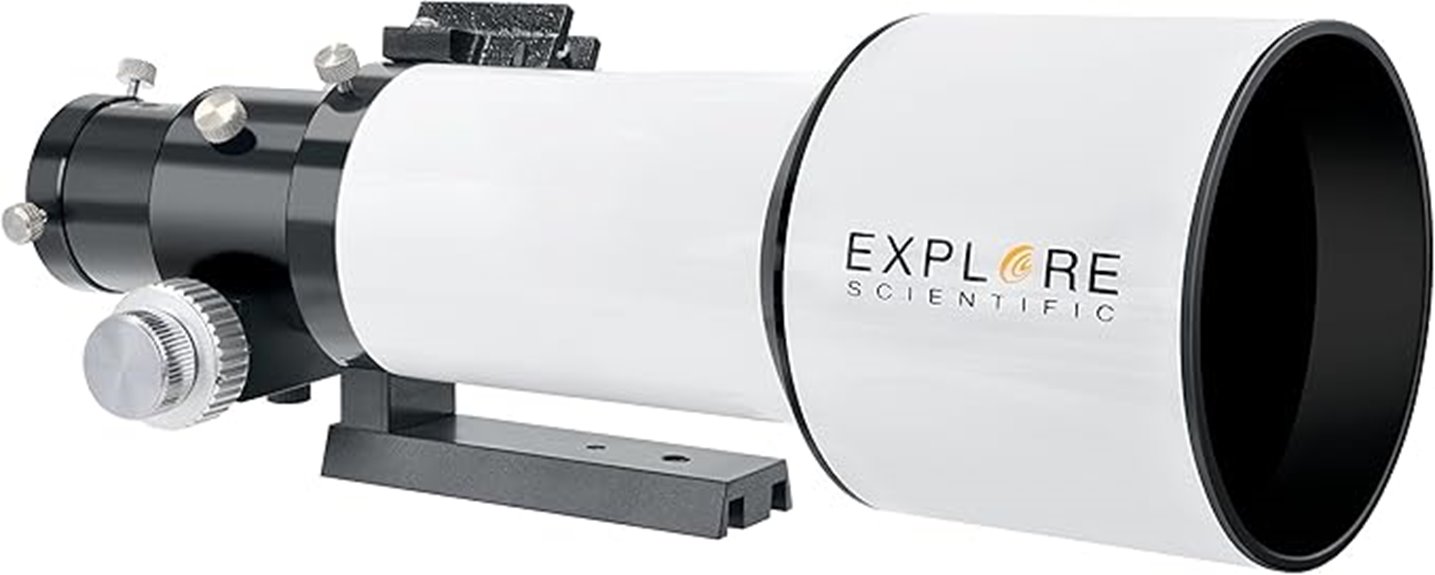
For astrophotographers seeking high-quality images in a portable package, the Explore Scientific ED80 Triplet Refractor Telescope stands out thanks to its superior optical design. It features genuine FCD1 HOYA ED glass and multi-layer coatings, ensuring high contrast and fine detail with minimal chromatic aberration. The 80mm aperture and f/6 focal ratio deliver sharp images of the Moon, planets, nebulae, and star clusters. Its lightweight, compact build (around 6 pounds) makes it easy to transport. While the included mount can have stability issues, many opt for additional rings or dovetails. Overall, the ED80 offers excellent optical performance and portability for astrophotography enthusiasts.
Best For: astrophotographers and visual astronomers seeking a high-quality, portable refractor with excellent optical performance.
Pros:
- Superior optical quality with genuine FCD1 HOYA ED glass and multi-layer coatings for high contrast and minimal chromatic aberration
- Compact and lightweight design, making it highly portable for field use and spontaneous observing sessions
- True triplet apochromatic design ensures sharp, detailed images of celestial objects
Cons:
- Mounting system may require modifications or additional accessories for improved stability and compatibility
- Proprietary finder scope mount may necessitate adapters or custom solutions for certain accessories
- Some users report minor manufacturing defects and the need for upgrades like rings or dovetails for optimal astrophotography performance
Explore Scientific FCD100 Series 80mm Air-Spaced Apochromatic Triplet Refractor Telescope

The Explore Scientific FCD100 Series 80mm Air-Spaced Apochromatic Triplet Refractor Telescope stands out as an excellent choice for astrophotographers seeking sharp, high-contrast images with minimal chromatic aberration. It uses genuine Hoya FCD100 ED optical glass and multi-layer coatings to deliver detailed views of the Moon, planets, nebulae, and galaxies. Its air-spaced triplet design virtually eliminates chromatic aberration, making it ideal for astrophotography. Compact and lightweight at just 7 pounds, it features a precise 2.5-inch focuser, integrated dew shield, and versatile mounting options. Overall, it’s a high-performance, portable scope perfect for serious stargazing and imaging.
Best For: astrophotographers and serious stargazers seeking high-contrast, detailed images with minimal chromatic aberration in a portable, high-quality refractor telescope.
Pros:
- Uses genuine Hoya FCD100 ED optical glass with multi-layer coatings for sharp, high-contrast views
- Air-spaced triplet design virtually eliminates chromatic aberration, ideal for astrophotography
- Compact and lightweight at just 7 pounds with a precise 2.5-inch focuser for easy handling and fine focusing
Cons:
- May have a higher price point compared to entry-level refractors
- Limited aperture size (80mm) may not gather as much light as larger telescopes for deep-sky objects
- Requires careful handling and proper mounting to maximize optical performance
Celestron StarSense Explorer DX 130AZ Telescope with Smartphone Dock
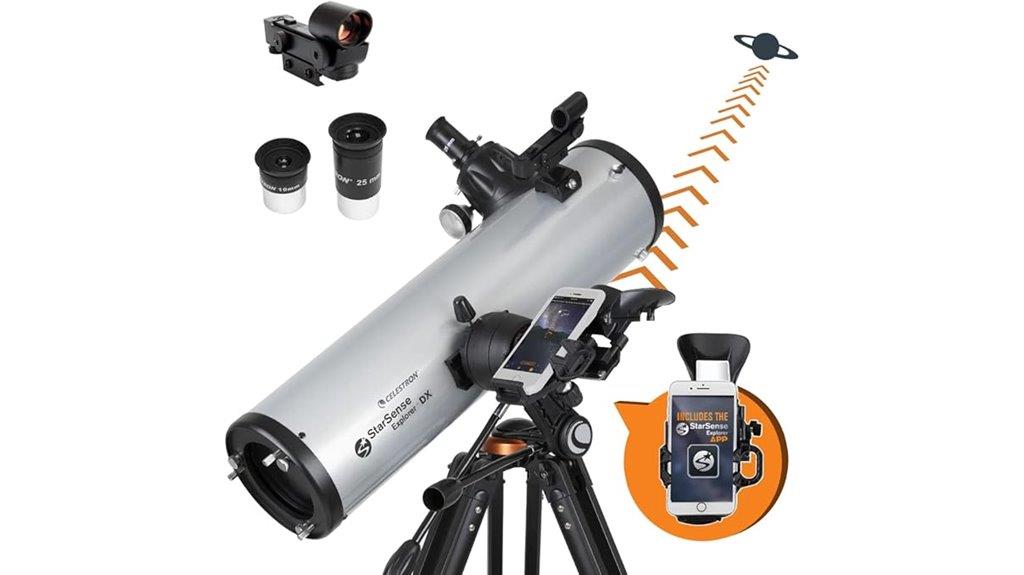
If you’re starting out in astrophotography and want an easy-to-use telescope that combines smart technology with solid optics, the Celestron StarSense Explorer DX 130AZ is an excellent choice. Its 130mm Newtonian reflector provides bright, sharp views of the Moon, planets, and deep-sky objects like nebulae and galaxies. The standout feature is its StarSense technology, which uses your smartphone to recognize star patterns and guide you to objects with on-screen arrows. The manual altazimuth mount offers smooth tracking, making setup straightforward for beginners. With a 2-year warranty and US-based support, this telescope makes celestial exploration accessible and enjoyable.
Best For: beginners and amateur astronomers seeking an easy-to-use, smartphone-integrated telescope for celestial observation and entry-level astrophotography.
Pros:
- User-friendly setup with manual altazimuth mount and smooth tracking controls
- Advanced StarSense technology that simplifies star and object locating using your smartphone
- Bright 130mm aperture provides vivid and detailed views of planets, nebulae, and deep-sky objects
Cons:
- Manual mount requires manual adjustments for tracking, limiting long exposure astrophotography
- Smartphone dependency means functionality relies heavily on app performance and compatibility
- Not ideal for advanced astrophotography or astrophotographers seeking motorized tracking systems
Explore Scientific FCD100 Series ED102 102mm Refractor Telescope

Looking for a high-performance refractor that delivers crisp, chromatic aberration-free images? The Explore Scientific FCD100 Series ED102 is an excellent choice. This 102mm apochromatic triplet refractor features a fast f/7 focal ratio and lightweight design, weighing just 10.9 pounds. Its optical quality comes from genuine HOYA FCD100 ED glass, ensuring minimal chromatic aberration, enhanced by proprietary multi-layer coatings for sharp, vibrant images. Perfect for astrophotography and detailed viewing, it offers stunning clarity and contrast. With a solid reputation and high customer ratings, the ED102 is a reliable, portable, and high-quality tool for serious stargazers and astrophotographers alike.
Best For: serious amateur astronomers and astrophotographers seeking high-quality, crisp images with minimal chromatic aberration in a portable and lightweight refractor telescope.
Pros:
- Exceptional optical quality with genuine HOYA FCD100 ED glass for minimal chromatic aberration
- Lightweight and portable design at just 10.9 lbs, ideal for travel and field use
- Multi-layer coatings enhance image sharpness, contrast, and vibrancy for detailed viewing and astrophotography
Cons:
- Higher price point compared to standard refractors, which may be a consideration for budget-conscious users
- Limited to optical tube assembly (OTA) only; additional accessories are required for complete setup
- Availability and pricing may fluctuate, impacting purchase timing and budget planning
SVBONY SV105 Telescope Camera for Astrophotography
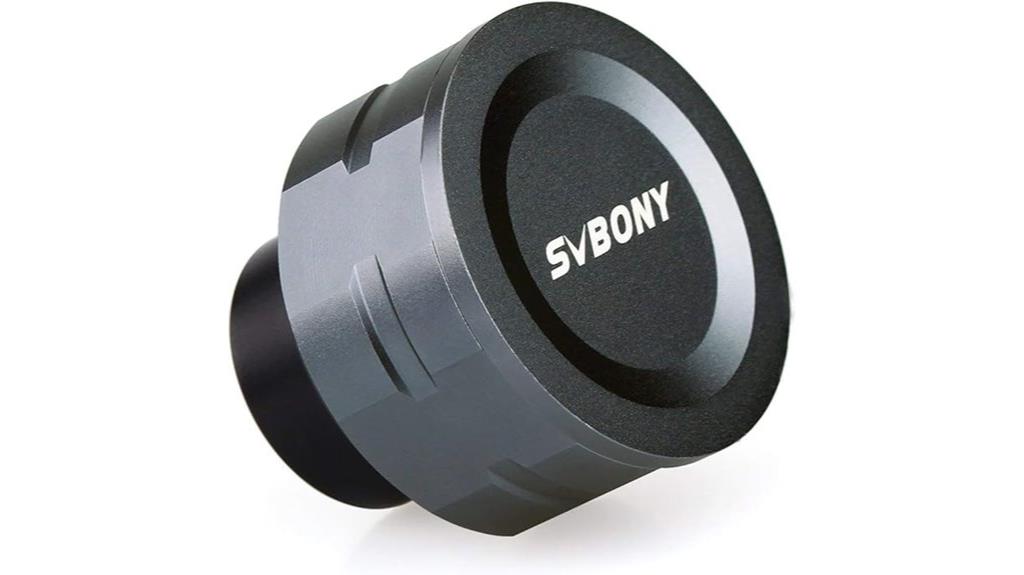
For beginner astrophotographers seeking an affordable and straightforward way to capture planetary details, the SVBONY SV105 Telescope Camera offers a compelling choice. It features a 1/2.8 IMX307 CMOS sensor that records up to 30 fps at 1920×1080 resolution, making it ideal for lunar and planetary imaging. The camera connects directly to telescopes via a standard 1.25-inch threaded interface, supporting filters and easy plug-and-play operation. Compatible with Windows, Linux, Android, and macOS, it requires no driver installation. Users appreciate its real-time viewing, simple setup, and ability to produce sharp planetary images, though some report minor software or connection challenges.
Best For: beginner astrophotographers seeking an affordable, easy-to-use camera for planetary and lunar imaging without complex setup.
Pros:
- Plug-and-play operation with no driver installation required, compatible across multiple operating systems.
- Capable of capturing high-resolution 1080p video at 30 fps, suitable for planetary detail imaging.
- Compact, lightweight design making it highly portable and easy to handle during observations.
Cons:
- Some users experience connection issues, recognition problems, or overheating during extended use.
- Software compatibility and adjustments may require extra effort, especially on Windows systems.
- Limited to 1080p resolution and basic features, which may not satisfy advanced astrophotographers seeking higher resolutions or cooled sensors.
Celestron Omni XLT 120 Refractor Telescope
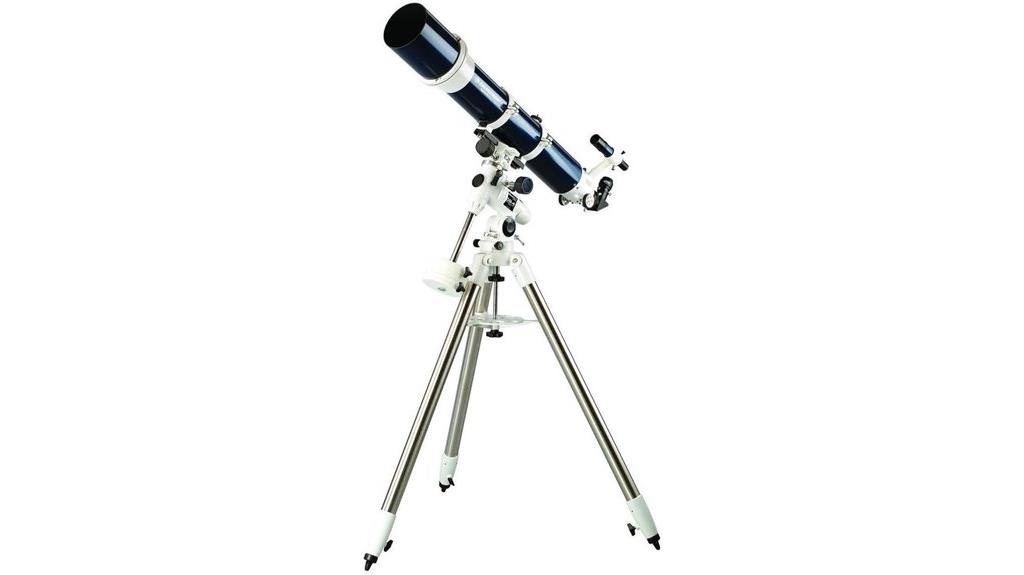
The Celestron Omni XLT 120 Refractor Telescope stands out as an excellent choice for amateur astronomers seeking sharp, high-quality planetary and lunar images. Its high-grade, fully multi-coated optics with StarBright XLT coatings maximize light transmission, delivering bright, crisp views with minimal aberration. The 120mm aperture is ideal for detailed moon and planetary observations, especially with upgraded eyepieces. Its sturdy German equatorial mount offers smooth tracking, while the portable design makes setup quick and easy. Though some find the finderscope orientation inconvenient, adding accessories like a laser finder can improve usability. Overall, it offers impressive optical performance at a great value.
Best For: amateur astronomers and stargazing enthusiasts seeking sharp planetary and lunar views with portable, high-quality optics.
Pros:
- Excellent optical quality with high-grade, fully multi-coated StarBright XLT lenses for bright, crisp images.
- Sturdy German equatorial mount with smooth tracking and precise controls, ideal for detailed observations.
- Portable design with quick setup, making it accessible for both beginners and experienced users.
Cons:
- Finderscope orientation can be inconvenient for overhead viewing, sometimes requiring adjustments or upgrades.
- Shipping issues and logistical problems reported by some customers can lead to delays and incomplete packages.
- Limited deep-sky object visibility due to the 120mm aperture compared to larger telescopes.
SVBONY SV550 Telescope with Accessories
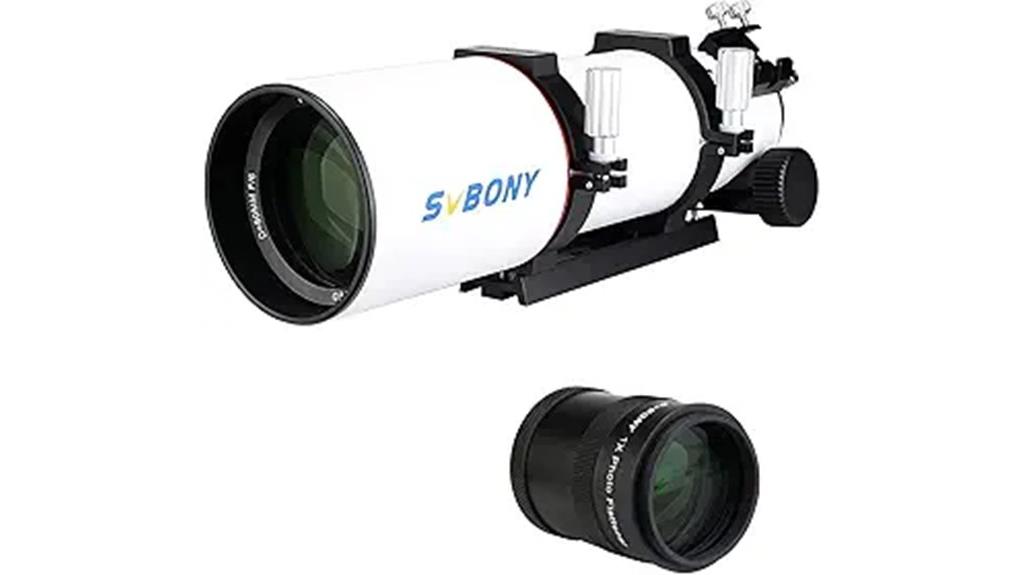
Are you searching for a lightweight, affordable telescope capable of delivering sharp, high-quality images for deep sky astrophotography? The SVBONY SV550 is an 80mm F6 APO triplet refractor designed for stellar imaging. Its advanced internal light barriers guarantee minimal light scatter, enhancing contrast. Made with a magnesium alloy focusing seat, it’s lightweight and portable. It comes with a 180mm hollow dovetail plate for stability, plus a field flattener supporting full-frame cameras with a 55mm back focal length. Users praise its sharp, color-accurate images and excellent value, making it ideal for beginners and experienced astrophotographers alike.
Best For: amateur and beginner astrophotographers seeking an affordable, lightweight telescope capable of capturing sharp, high-quality deep sky images.
Pros:
- Excellent value offering high-quality images at a lower price point compared to more expensive APO triplets
- Compact and lightweight design, making it highly portable for field use and easy to set up
- Advanced internal light barriers enhance contrast and reduce light scatter for clearer astrophotography results
Cons:
- Focus lock mechanism is simple and may lack precision, potentially leading to accidental shifts during imaging
- Internal dust may be present, requiring occasional cleaning, although it does not affect optical quality
- Mounting setup could benefit from additional clearance to prevent contact between the mount rail and focuser when balancing
Askar 120APO Telescope for Astrophotography and Viewing

If you’re seeking a high-quality telescope that delivers exceptional color correction and sharp images, the Askar 120APO stands out as a top choice. Its 120mm aperture and F7 focal ratio provide bright, detailed views and excellent astrophotography capabilities. The triplet air-spaced APO objective lens, featuring ED glass, ensures minimal chromatic aberration and high contrast. With a total length of around 722mm and a weight of about 5.7kg, it’s portable yet precise. The package includes everything you need, like tube rings and a carrying case. Overall, the Askar 120APO offers superb optical quality and solid construction for both astrophotography and visual observing.
Best For: amateur astronomers and astrophotographers seeking a high-quality, portable telescope with excellent color correction and detailed views.
Pros:
- Triplet air-spaced APO design with ED glass for minimal chromatic aberration and high contrast
- Bright, sharp images with a 120mm aperture and F7 focal ratio ideal for astrophotography and viewing
- Comes with comprehensive accessories including tube rings, dovetail plate, carrying case, and manual for easy setup and transport
Cons:
- Relatively heavy at 5.7kg, which may affect portability for some users
- Longer total length (around 722mm) may require more space for storage and handling
- As a high-end optical instrument, it may be priced higher compared to entry-level telescopes
Explore Scientific FCD100 127mm f/7.5 Carbon Fiber Triplet ED APO Refractor Telescope

For serious astrophotographers seeking a lightweight yet high-performing refractor, the Explore Scientific FCD100 127mm f/7.5 Carbon Fiber Triplet ED APO stands out. It features a 127mm aperture, f/7.5 focal ratio, and a focal length of 952mm, delivering sharp images with a resolution of 0.9 arcseconds and a limiting magnitude of 13. Weighing just 14 pounds and measuring 33.25 inches, it’s portable for fieldwork. The 2.5 HEX focuser supports precise focusing, ideal for astrophotography. While its optical quality is decent, some users find the included accessories lack refinement, and customer service has been criticized. It’s best suited for those willing to upgrade components and manage support challenges.
Best For: serious amateur astronomers and astrophotographers seeking a lightweight, high-quality refractor with the potential for upgrades and detailed imaging.
Pros:
- High-quality optical performance with sharp images and 0.9 arcsecond resolution.
- Lightweight and portable design ideal for field use and astrophotography.
- Equipped with a precise 2.5 HEX focuser suitable for detailed focusing needs.
Cons:
- Included accessories like focuser and diagonal are considered subpar and may require upgrades.
- Customer service and warranty support are often reported as unresponsive and unsatisfactory.
- The product is relatively expensive compared to the quality of some components and overall optics.
Factors to Consider When Choosing 130MM Triplet APO Refractors for Astrophotography

When selecting a 130mm triplet APO for astrophotography, I focus on several key factors to guarantee I get the best value and performance. Optical quality, focuser stability, and mount compatibility are vital, but I also consider price, support, and warranty. These points help me make an informed choice that suits my imaging needs and budget.
Optical Quality and Glass
Optical quality is the cornerstone of any high-performance 130mm triplet APO refractor, especially for astrophotography, where precision matters. High-quality models use ED (extra-low dispersion) glass to minimize chromatic aberration, resulting in sharper, more accurate colors. The air-spaced triplet design enhances correction by allowing precise lens spacing, reducing field curvature, and ensuring sharpness across the entire field of view. Using genuine optical glass like FPL-51 or FCD1 is essential for ideal light transmission and contrast. Multilayer coatings on all optical surfaces boost light transmission, cut reflections, and improve image brightness. Achieving minimal optical imperfections relies on meticulous lens fabrication, proper collimation, and high-quality assembly, all indispensable for consistent, stellar astrophotography results.
Focuser Precision and Stability
Choosing a focuser with precision and stability is crucial because it directly impacts the quality of your astrophotography images. A high-quality 2.5-inch or larger dual-speed focuser with a 1:10 gear ratio allows for precise, smooth adjustments, which are essential during long exposures. Mechanical stability is equally important; minimal play and backlash ensure the focus stays locked in, preventing image shifts. A robust focuser with fine focus control reduces focus drift and helps maintain sharpness when switching accessories or cameras. Features like locking knobs and tension adjustments provide added stability, preventing vibrations or external movements from affecting your focus. Compatibility with focus lock or compression rings also enhances stability, especially when using heavy equipment, ensuring consistent, crisp images every time.
Mount Compatibility and Portability
Ensuring your 130mm triplet APO refractor is compatible with your mount is essential for stable and accurate astrophotography. Confirm that the telescope’s mounting system matches your mount, such as Vixen-style or Losmandy D-type, for secure attachment and proper balance. Consider the overall weight and size of the refractor to guarantee it can be comfortably transported and mounted without causing stability issues. Verify that the focuser can handle the weight of your cameras and accessories, especially full-frame cameras or focal reducers, to maintain precise focus during long exposures. Also, check the telescope’s length and dimensions to see if it fits your travel setup or field configuration. Finally, ensure the included dovetail plate matches your mount’s saddle for quick setup and secure balancing.
Pricing and Value Balance
When selecting a 130mm triplet APO refractor for astrophotography, balancing price and value is essential to making a smart investment. A higher price often suggests better optical quality and build, but that’s not always the case, so it’s crucial to evaluate the value ratio. Budget-friendly models may lack premium features or robust support, which could lead to additional upgrade costs later. Comparing optical performance—like chromatic aberration correction and resolution—helps determine if a more expensive scope genuinely offers better imaging. Accessories such as field flatteners, focusers, and mounts can substantially impact overall cost-effectiveness. Ultimately, you should assess whether the scope’s capabilities meet your astrophotography needs without paying for unnecessary extras, ensuring you get the best balance between cost and performance.
Support and Warranty Services
Support and warranty services play a vital role in maintaining your astrophotography setup’s reliability over time. Reliable support ensures quick assistance and repairs, reducing downtime and keeping your imaging sessions on track. A manufacturer with a dedicated US-based support team offers faster responses and clearer communication, making troubleshooting much easier. Extensive warranties that cover optical, mechanical, and electronic components provide peace of mind, protecting your investment from unexpected issues. Clear warranty policies and accessible customer service channels help avoid frustration and guarantee smooth problem resolution. Positive feedback from other users about a company’s support services indicates a genuine commitment to customer satisfaction and long-term product reliability. Prioritizing these factors helps you choose a refractor that offers not only excellent imaging but also dependable after-sales support.
Frequently Asked Questions
How Do Triplet APO Refractors Compare to Doublets for Astrophotography?
Triplet APO refractors typically outperform doublets in astrophotography because they better correct chromatic aberration, resulting in sharper, more color-accurate images. I find that triplets offer superior contrast and detail, especially for deep-sky objects and planetary imaging. While doublets are often more affordable and lighter, I prefer triplets for their enhanced optical quality, which makes a noticeable difference in capturing stunning, high-quality astrophotos.
What Are the Best Accessories for 130MM Triplet APO Telescopes?
Did you know that the right accessories can boost your astrophotography success by up to 50%? For my 130mm triplet APO, I recommend a high-quality equatorial mount for stability, a reliable off-axis guider for precise tracking, and a good dew shield to prevent fogging. Additionally, investing in a sturdy tripod, a set of filters for different imaging conditions, and a dedicated astrophotography camera really enhances image quality and ease of use.
How Does Aperture Size Affect Image Quality in Astrophotography?
Aperture size directly impacts image quality by gathering more light, which enhances detail and reduces noise in astrophotography. With a larger aperture like 130mm, I can capture fainter objects and achieve sharper, more vibrant images. It also improves resolution, allowing me to see finer details in planets and deep-sky objects. So, bigger apertures really give me a noticeable boost in the clarity and richness of my astrophotos.
What Maintenance Is Required for High-Quality Triplet APO Refractors?
Ever wonder what keeps a high-quality triplet APO refractor performing at its best? I make sure to regularly check and clean the lenses with proper supplies, avoiding harsh chemicals. I also keep the telescope covered when not in use to prevent dust buildup. Periodic collimation and inspecting the mount ensure steady imaging. These simple steps maintain the optics and deliver those crisp, stunning astrophotos I crave.
Which Mounting Systems Optimize Astrophotography With 130MM Triplet APOS?
For ideal astrophotography with my 130mm triplet apo, I prefer using a sturdy equatorial mount like the Losmandy G11 or an Astro-Physics AP900. These mounts provide smooth tracking, high payload capacity, and precise polar alignment, which are essential for long exposures. I also make certain my mount is well-balanced and regularly calibrated. This setup helps me capture sharp, detailed images of the night sky without frustration.
Conclusion
Choosing the right 130mm triplet APO refractor feels like selecting the perfect brush for a masterpiece—each offers unique clarity and detail. Imagine gazing through a crystal-clear window into the cosmos, stars shimmering with vibrant precision. Whether you prefer the sleek elegance of Explore Scientific or the versatile features of SVBONY, these telescopes open a gateway to breathtaking stellar images. Whichever you pick, your journey into the universe will be brighter and more awe-inspiring than ever.
